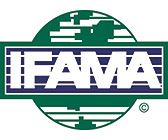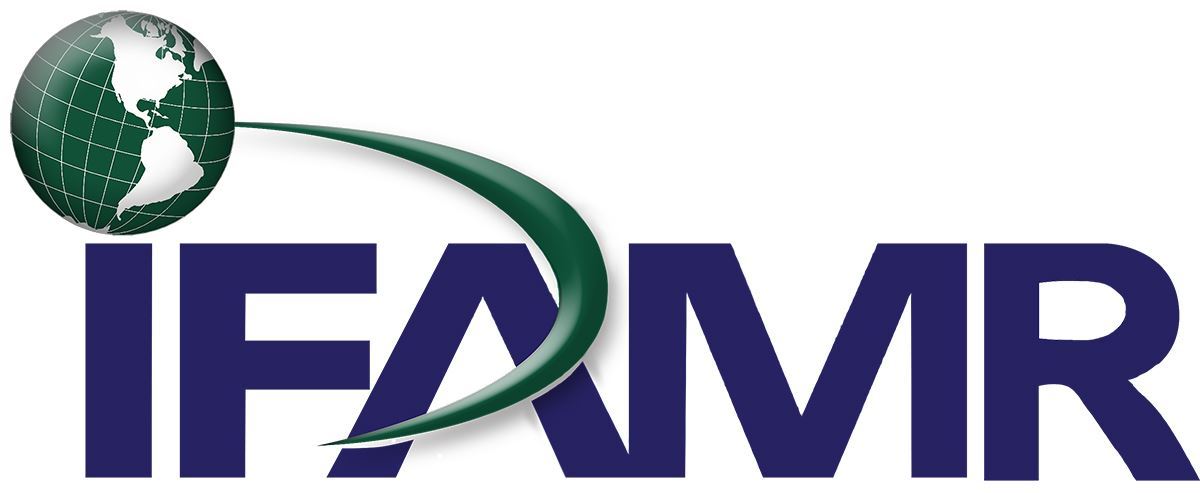| INTERNATIONAL FOOD AND AGRIBUSINESS MANAGEMENT ASSOCIATION |
IFAMR SUBMISSION GUIDELINES |
Editorial PhilosophyThe International Food and Agribusiness Management Review (IFAMR) is an online and Open Access intellectual meeting place for industry executives, managers, scholars and practitioners interested in the effective management of agribusiness firms and organizations operating in the global food system. It is internationally recognized as a catalyst for discussion and inquiry for those interested in the food and agribusiness system. Specifically we seek articles that are relevant to management scholars and/or managers. The core values of the Review are as follows: excellent academic contributions; fast, thorough, and detailed peer reviews; building human capital through the development of good writing skills in scholars and students; broad international representation among authors, editors, and reviewers; a showcase for IFAMA’s unique industry-scholar relationship, and a facilitator of international debate, networking, and research in agribusiness. The Review welcomes scholarly articles on business, economics, public policy, and law pertaining to the global food and agribusiness system. Articles may be applied or theoretical, but must address an issue relevant to managers or management, and advance the topic through implication and application. Articles focused on a special issue, case studies, industry interviews, and book reviews are also welcome. The Review is an open access, peer-reviewed, online journal published by De Gruyeter Brill, with 5-7 issues per year. Special Issues are published on topical and regional issues throughout the year. Guidelines for Contributors Note: We receive a large number of submissions. The high volume, while wonderful, is time consuming for our editors and reviewers. Therefore, articles accepted for review must adhere to our Contributor Guidelines. Unfortunately, we will desk reject submissions that do not follow these guidelines. Articles appear in one of the following sections: Research, Reviews, Industry Commentaries and Case Studies. All submissions are double-blind peer reviewed.
The Review Process Articles Each submission undergoing a blind peer review is assigned a Managing Editor by the Executive Editor. The Managing Editor is selected based on either their familiarity with the topic and/or their geographic proximity to the submitting authors. The Managing Editor is responsible for reviewing the manuscript, evaluating the reviews, and working with authors to analyze the information provided by the reviewer team to strengthen the quality of the final product. The Managing Editor will also facilitate manuscripts under revision. Each manuscript is reviewed by a minimum of two anonymous reviewers. The Managing Editor and the Executive Editor determine the final disposition of a manuscript. Reviewers are asked to be very specific with their critique and list each item they would like the author to address. To this end line numbers are inserted into each manuscript to help the reviewer’s maximize the clarity of their comments. Authors then shall respond to each of the reviewer’s comments and note where changes occur in the text. If no change is made, a rationale for not changing the text needs to be provided to the reviewer. Reviewers will also address the following questions in addition to a thorough critique of the manuscript: A. Does the author state clear objectives? Reviewers are asked to provide a recommendation to the Managing Editor. Written comments and an assessment are provided for the dimensions mentioned above. The reviewer then makes one final comprehensive recommendation to the Managing Editor:
Cases The case and teaching note/package undergoing peer review are sent by the Managing Editor to a minimum of two anonymous reviewers, who are asked to address these questions: 1. Is this case relevant to food and agribusiness clients? Is the context still relevant? Will the case stimulate student interest? 2. Is the difficulty of the case appropriate for its target market? Does the case provide sufficient information, given its teaching objectives? 3. Is the case clear, well written and presented in a manner that is accessible to students, management and academics? Is the teaching note complete? 4. Is the target market well defined and appropriate, reasonable? 5. Is the teaching strategy sound and complete? Has the case been “classroom” tested, is it likely to work? 6. Is the list of questions and assignments well rounded, sound, likely to work? 7. As appropriate, given the case content: is the research process appropriate and complete; is the simulation complete, sound and realistic; is the description complete and does it provide sufficient details? 8. Is the follow-up relevant and consistent with the case, is it interesting to the case user, addressing the key points of the case (or explaining why they were not addressed)? Reviewers are asked to provide a recommendation to the Managing Editor. Written comments and an assessment are provided for the dimensions mentioned above. The reviewer then makes one final comprehensive recommendation to the Managing Editor:
Formatting Articles Title page:
Body of the manuscript:
General Formatting Instructions The title page and the main manuscript files can only be submitted in MS WORD format. The submission system will create an author/editor as well as a blind reviewer pdf and automatically add line numbers.
Mathematical Notation Use only essential mathematical notations. Equations should be numbered and appear in the correct location in the manuscript. Preferably, they must be created using the normal font type. If this is not possible, use formula editor. If this cannot be applied, insert them as an image or picture. Do not use formula editor or images for simple characters within a sentence. Do not use text boxes containing equations formatted in a different program, as this may result in formatting conflicts when the file is published on the IFAMR site. Leave a single blank line before and after the equation. For example:
Tables and Figures Tables/figures should appear in the correct location in the manuscript. They should not exceed the page size, the minimum font size is 10. Larger tables can be presented as supplementary data, for instance as an Excel table. Large landscape tables requiring a section break are to be placed at the end of the manuscript; in this case simply indicate in the manuscript where the table should be located). Each table/figure must have a title, and should be referred to in the manuscript, should be centered horizontally, with text wrapping set to none. Figures may use color. Tables should be single-spaced. Please do not use vertical lines, nor shading or patterns; hide gridlines. Vertical alignment of cells should be centered. Please leave a two blank lines before the title of the table/figure and two blank lines following the table/figure. An example is provided in the following table, Table 1.
Present all values in Tables and Figures as concisely as possible. Avoid excessive use of zeros or decimals. Use commas to separate thousands and periods to separate decimals. Pay special attention to keep zeros to a minimum on the Y axis of figures. Please note that De Gruyter Brill Publishers will not artificially enhance the quality of photos or redraw results presented in figures. Authors therefore should supply figures that are suitable for publication. Figures that lack the quality standard (see below and in the Appendix) will not be considered for publication.
Download a pdf of "Preparing Artwork for IFAMR" Footnotes Footnotes should appear throughout the paper as needed and be numbered consecutively, not page-by-page or by section. Use footnotes only for explanatory purposes, not for guiding to specific information or work. References References should be single-spaced at the end of the text. When possible also include the DOI of the article in the reference list. References to other publications should contain full bibliographical details. Journal titles should be written in full. For multiple citations in the same year use a, b, c immediately following the year of the publication. An abbreviated sample follows:
Appendices and Electronic Supplementary Material Appendices should adopt the same formatting used in the body of the manuscript. They will be published online as electronic supplementary material. Electronic Supplementary Materials can be any type of editable file, such as MS Word, MS Excel, MS PowerPoint, pdf or mp4. Other Tips
Cases
A Teaching Note normally includes the following sections: Statement of Relevance
Target Market Statement
Teaching Strategy Statement
Activity Statement
Research Statement
Follow-up Statement
Submission Conditions Manuscripts (articles and cases) must not have been previously published or submitted elsewhere simultaneously. Authors are responsible for obtaining permissions from the copyright owner for any quotations, illustrations or tables. Authors agree to pay the publication fee of 1100 Euro if the article is accepted (the publication fee will be increased to 1300 Euros per January 1, 2022). An accepted article will be published under the Creative Commons (CC) BY 4.0 publishing license. Plagiarism If a submitted manuscript is determined to involve serious or extensive plagiarism, including self-plagiarism, it will be rejected. The editor may document and report these allegations to the appropriate officials of the authors’ home institution(s). Submissions to the Journal by the Executive or Managing Editors In order to ensure the absolute integrity of the IFAMR review process, the following two measures have been implemented to handle submissions listing either the Executive Editor or any Managing Editor as author:
Publication The IFAMR is published in electronic format at the journal website: https://www2.cloud.editorialmanager.com/ifamr/default2.aspx. Upon acceptance of the manuscript for publication, authors will sign the open access publication license to IFAMA and provide the Editorial Office with a final version of the manuscript. The corresponding author will receive page proofs in pdf format for final inspection before publication. The author is responsible for the accuracy of these proofs. An official letter is sent to confirm acceptance of a submission, and confirm the completion of the blind peer review process. Once accepted for publication, a file cannot be modified. Minor corrections will be added to the file, but will not replace the original text. Changes and revisions of a more substantial nature will require a separate submission to IFAMR. Fees The IFAMR is a non-profit organization supported by a combination of fees, industry grants and in-kind professional support. Authors are not charged a submission fee for the double blind peer review process, however, a fixed Publication Editing Fee of 1300 Euro (ex. VAT) per article is invoiced upon acceptance of the manuscript. The payment term is 14 days after the in voice date. A credit card is the preferable form of payment. Fee waivers are handled on an individual basis, based on need and the availability of funds. A request for a partial fee waiver must be mentioned in the cover letter of a submission. Only corresponding authors from ‘low income’ and ‘lower middle income’ as defined by the World Bank Country Classification, calculated using the World Bank Atlas method are eligible for a (partial) fee waiver. Note that a decision on granting a (partial) fee waiver is made quarterly by IFAMA, and thus can result in considerable publication delay. Submission Instructions Upload your manuscript, subsequent revisions and all supporting documents electronically by clicking the link: https://www2.cloud.editorialmanager.com/ifamr/default2.aspx You need to login at your account or register as new user before you can submit a manuscript. In your account you are also able to see the progress of the article in the review process, or access any manuscript you were assigned to review. For questions please contact: Administrative Editor, IFAMR Marc Jarmuszewski: marc.jarmuszewski@brill.com |
Submission InformationArticle ReprintsJoin our Editorial TeamIndexing & Cataloging IFAMRResources for Authors |


